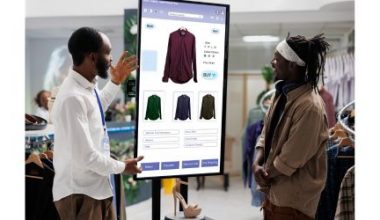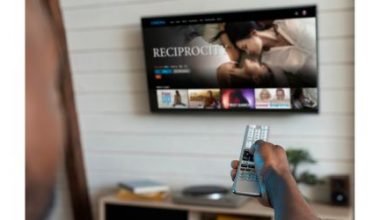Video ads are a powerful way for brands to reach people today with the aid of video advertising platforms. They combine images, sound, and movement, which makes them great at grabbing attention and delivering messages in a way that sticks with viewers.
Video ads are so effective because they can make people feel something. A good video can tell a story, make people laugh, or inspire them, which helps the message stay in their minds. The mix of visuals and sound makes it easier to remember, which is great for brand recognition.
Video ads are also very versatile. They can appear in different formats, like short clips before videos, in-stream ads, or social media stories. This allows brands to try other ways to connect with their audience. Whether a quick 6-second ad on video advertising platforms like YouTube or a 30-second Instagram Story, video ads offer flexibility to find the best format.
With more people choosing to watch videos, video ads have become essential. It’s a smart strategy that can help businesses grow, connect with their audience, and see a better return on investment.
Key Points:
- The Power of Video Ads: Video ads use visuals, sound, and movement to grab attention and deliver messages that stick with viewers, making them a powerful way to advertise.
- Flexibility of Video Ads: Video ads can appear in many formats, such as before, during, or after videos, on social media stories, or as display ads, giving brands many options to reach their audience.
- Building Engagement and Emotional Connections: Video ads are effective because they connect emotionally with viewers. Through storytelling, humour, or inspiration, they help people remember the brand better.
- Top Video Advertising Platforms: Platforms like Google Ads, YouTube, LinkedIn, Facebook, TikTok, Instagram, X (Twitter), Snapchat, Pinterest, and Primis provide a range of features for targeted and engaging video ads.
- Video ads offer several benefits: they grab people’s attention, improve your website’s SEO by keeping visitors on your site longer, increase brand recognition, and help build trust with your audience. This leads to more sales and stronger customer relationships.
What Is Video Advertising?
Video advertising is an effective marketing strategy where businesses use short, engaging videos to promote their products or services. These videos are typically shown before, during, or after the main content in a video stream with the use of video advertising platforms.
Watching videos has always been one of my favourite ways of easing stress; unlike static ads, videos use visuals, sound, and movement to grab attention. By showing how a product works or telling a story, video ads can connect with viewers emotionally, encouraging them to take action, like making a purchase or learning more.
Video ads are a fun and effective way to share information. Videos make content entertaining and informative, whether it’s a tutorial, product demo, or a customer review.
Since videos are shareable, viewers can send them to friends, expanding the ad’s reach. This type of advertising is versatile and helps businesses reach a broad audience across different platforms, increasing brand awareness and customer engagement.
Video ads come in a few types:
- Pre-roll ads: Ads that play before the main video, like on YouTube.
- Mid-roll ads: Ads that appear in the middle of a video.
- Post-roll ads: Ads that play at the end of a video.
- Social media stories or reels: Short video ads that show up in Stories on apps like Instagram or Snapchat.
- Display ads with video: Banner or pop-up ads that include a video.
Video Advertising Platforms.
Video advertising platforms are helpful tools for businesses to reach people with engaging videos. They make creating, managing, and sharing video ads easy across different websites and apps, offering features to match different advertising goals.
These Platforms include:
#1. Google Ads:
Google Ads, previously called Google AdWords, is an excellent tool for online advertising. It helps businesses promote their products or services on Google’s colossal platform. With over 8.5 billion searches happening on Google daily, it’s a smart way to connect with potential customers.
It’s one of the most popular ad platforms for a reason. Google handles about 92% of all searches worldwide, and many businesses team up with PPC (pay-per-click) experts to get better results from their ads. The pricing is simple, so businesses can easily track where their money is going. In fact, more than 80% of companies use Google Ads for their PPC campaigns.
#2. Youtube:
YouTube is still the top choice for video advertising, with over 2 billion people using it monthly. Its powerful tools let you target the right audience based on age, interests, or behaviour, and there’s also a provision for shorts.
You can also choose how to pay for ads. One option is cost-per-click (CPC), where you pay only when someone clicks on your ad to visit your site. The other option is cost-per-view (CPV), where you’re charged only if someone watches your whole ad.
#3. LinkedIn:
LinkedIn is a social media platform designed for business and career connections, available on websites and mobile apps. While people don’t always think of LinkedIn as a social media site, it’s a great advertising tool—mainly if your business targets other businesses (B2B). LinkedIn is perfect for sharing content related to your industry, as it focuses more on a business audience than other platforms like YouTube.
#4. Facebook:
Facebook remains a popular choice for social media marketing, with over 2.9 billion active users every month. It’s a great way for your brand to connect with a wide range of people. The platform offers various ad types, such as videos, carousels, stories, and images, so you can experiment and see what works best for your audience. Facebook was a massive breakthrough for me during my early startup in my business.
Facebook Ad Manager is easy to use, even if you’re new to advertising or running a small business. You can also extend your campaigns to other Meta platforms like Instagram, WhatsApp, and Messenger, reaching people on multiple channels.
Like other ad platforms, such as Google Ads, you can set a budget and choose to pay based on impressions (how many people see your ad) or conversions (actions like clicks or purchases).
#5. TikTok:
TikTok is a video app that’s gotten popular lately. While most of its users are Gen Z, older people are starting to use it, too. Unlike Facebook and Instagram, TikTok stands out because it learns what you like and shows videos that match your interests, keeping you engaged.
Its quick growth makes it perfect for reaching younger audiences. Plus, its short, fun videos and innovative tools make it easy to create viral content.
#6. Instagram:
Instagram Ads leverage its large user base and Facebook’s Ads Manager to boost awareness, conversions, and engagement. With features like Instagram Shops and Shopping tags, businesses can sell directly on the platform, making it ideal for visually appealing fashion, beauty, and e-commerce products.
Since Instagram is part of the Meta family, it shares many features with Facebook Ads, enhancing brand recognition. Brands can run flexible campaigns of any size, from single post boosts to more prominent multi-platform ads, reaching an audience of 1.63 billion. Ads can be managed through Meta Ads Manager or Metricool.
#7. X (Twitter):
Twitter, now called X, is one of the biggest social media platforms, along with Facebook and Instagram. A great way to advertise on X is by using promoted tweets, which push your business’s tweets to the top of people’s feeds. X also has trending topics and hashtags to help your videos go viral and spark conversations about your brand.
With its massive global audience, X allows businesses to take advantage of trending events, share updates, and interact with people in real time. In today’s fast-changing digital world, X is a powerful platform for creating attention-grabbing videos that lead to meaningful interactions—an essential part of a strong video marketing strategy.
#8. Snapchat:
Since its launch in 2011, Snapchat has become a major social media platform, especially for targeting younger audiences. Known for disappearing photos and videos, it’s also a powerful tool for video marketing.
Snapchat ads blend seamlessly into Stories and Discover feeds, feeling natural and less intrusive. With features like AR lenses and filters, brands can create engaging and interactive ads. Ideal for connecting with millennials and Gen Z, Snapchat helps businesses craft memorable short videos that enhance their digital marketing strategy.
#9. Pinterest:
Pinterest is another platform for creativity, visuals, and inspiration. Like TikTok, it works well as a search engine for discovering new ideas. This has always been my favourite platform as it resonates with its users on a personal level. It even gives suggestions and pins that match your search interests.
Whether you’re promoting your products, linking to your latest blog, or running fun video ads, you can use Pinterest tools to target the right people based on keywords, interests, demographics, and similar audiences. Pinterest’s video ads fit seamlessly with its pin-style format, making it a great choice for home decor, fashion, and lifestyle brands.
#10.Microsoft:
Microsoft Advertising is a budget-friendly way to share video ads, especially if you want to connect with professionals. Your ads can show up on Bing, Outlook, and LinkedIn, using smart AI to target the right audience. You can pick different video styles, track your results with detailed reports, and reach even more people through partners like Xandr. It’s a great option for campaigns that rely on data to succeed.
Choosing the Right Video Advertising Platforms.
Choosing the right video advertising platforms is super important for a successful campaign. To help you decide, we’ve created a simple Platform Comparison Checklist. This tool makes it easy to compare different platforms based on cost, audience, ad options, and more. Use it as a guide in creating your own checklist that fits your goals.
Benefits of Video Advertising Platforms.

#1. Better Engagement:
Videos are great at grabbing attention. People spend 88% more time on websites with videos than those without. Adding videos to your site or social media can keep your audience interested and interacting with your content.
Simply put, videos are easy to watch, entertaining, and informative, helping people quickly decide what to do or buy.
#2. Boosts SEO Effectiveness:
Video content enhances your SEO strategy by encouraging visitors to spend more time on your site. This tells search engines that your site provides valuable content, which can improve your rankings and make your business more visible to potential partners. Additionally, videos simplify SEO as they perform well across different devices.
#3. Boost Your Sales:
Videos are a great way to attract people who are genuinely interested in what you offer. Sharing helpful and engaging videos can turn casual viewers into potential customers who want to learn more. It’s a simple but powerful way to get people excited about your brand and grow your sales.
#4.Brand Awareness and Recall:
Video content is a powerful way to boost brand awareness, connect with new audiences, and build recognition. Videos help businesses stand out, create lasting impressions, and reinforce their identity by integrating elements like colours, logos, and unique visuals.
#5. Builds Trust and Credibility:
Trust is key to making sales and keeping customers loyal, especially since online shoppers worry about scams. Videos, like 360° tours of your office or expert explainers, feel more real and build confidence. Unlike text or image ads, videos tell more honest stories and help create lasting connections with your audience.
Conclusion:
Video advertising platforms have transformed how businesses connect with their audience. With engaging content, precise targeting, and instant feedback, these platforms help advertisers create messages that connect.
Each platform, whether it’s YouTube’s broad reach, TikTok’s viral potential, or LinkedIn’s professional focus, offers unique benefits for different marketing goals. Businesses can improve their visibility and impact by understanding how each platform works and using its features effectively.
As video continues to grow in popularity, choosing the right platform is essential for staying competitive and achieving long-term success in today’s fast-paced digital world.
Frequently Asked Questions:
What is Video Advertising?
A video ad is a short, informative video designed to promote a product or service. It can last anywhere from a few seconds to a couple of minutes. The goal is to clearly show what the product or brand is about and what it offers to customers.
What is a Video Advertising Platform?
A video advertising platform is a tool or service that helps businesses make, manage, and share video ads on different websites and apps.
What are the most popular platforms for video ads?
Some of the best-known ones are YouTube Ads, TikTok Ads, Meta Ads (which cover Facebook and Instagram), Google Ads, and Amazon Video Ads.
Why are Video Ads so effective?
Video ads work well because they grab attention with both images and sound, making them easy to remember. They stir emotions, which helps people remember the brand and the message longer.
How does Video Advertising boost SEO?
Videos help people spend more time on websites, which tells search engines that the content is useful. This can boost search rankings and make businesses more visible, making video content an important part of an SEO strategy.
Why is it important to target the right audience with video ads?
Targeting the right audience makes sure your video ads are shown to people who are most likely interested in your product or service. When you target the right group, the ads work better, leading to more engagement, a higher return on investment, and better conversion rates.
How does video advertising contribute to building trust with customers?
Video ads, especially those showing real people, behind-the-scenes moments, or customer stories, make brands seem more genuine. This openness helps build trust with potential customers, making them more likely to connect with and buy from the brand.
How do pre-roll, mid-roll, and post-roll ads differ?
Pre-roll ads play before the video starts, mid-roll ads appear while the video is playing, and post-roll ads show up after the video ends. Each type has its benefits: pre-roll ads get more attention, mid-roll ads keep people engaged during the video, and post-roll ads help remind viewers of the message after the video is over.
Related Articles:
- How to Integrate Content Marketing Automation into Your Existing Marketing Strategy
- How to Choose the Right Advertising Platform for Your Brand






